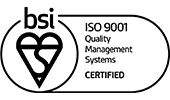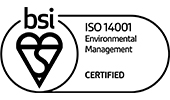The second of our Thought Leadership events, looking at best practice in office design and was another successful evening of insightful opinion and debate.
Since it was so in-depth, we thought we’d give you a more detailed look at the presentation from our keynote speaker, Rob Briner. Professor of Organisational Psychology at the School of Management, University of Bath, and vice chair at the Center of Evidence Based Management in Amsterdam, Rob was here to explore how the productivity of knowledge workers can be measured.
The Research
In 2014, as part of his role at the Center of Evidence Based Management, Rob and his colleague, Eric Barends, embarked upon research into how the performance of knowledge workers was currently measured. It became clear that specific examples were few and far between and that the evidence would need to be explored further to establish patterns and strategies that would aid their understanding. They did this by posing themselves a series of questions.
Who are knowledge workers and what do they do?
Before anyone can claim to understand how the productivity of knowledge workers might be measured, it’s important to clarify precisely who they are and what they do.
A less than scientific search on Wikipedia yields the definition; workers whose main capital is knowledge. Typical examples may include software engineers, doctors, architects, engineers, scientists, public accountants, lawyers, and academics, whose job is to “think for a living”. But it also recognises that there hasn’t yet been a succinct definition of the term.
It was first coined by author and management consultant, Peter Drucker, in the late 1950s. The majority of up-to-date academic articles that could be found on the subject dated from the 1990s and didn’t reflect the huge leaps in technology that had occurred in the workplace since then.
Everyone attending the Thought Leadership event was encouraged to discuss with their neighbour what they perceived to be the roles, responsibilities and job titles of staff who might be considered knowledge workers.
Opinions varied, but it was agreed that some of the defining factors were;
- They tended to be creative individuals
- A large part of their daily job would involve solving problems
- Their roles would be less transactional and repetitive, with the nature of their work likely to change on a daily basis
- Their work often resulted in intangible outcomes, they created ideas rather than physical products

Why is understanding them important?
Having explored who they are and what they do, it made sense to ascertain why it was important to understand the needs of knowledge workers. Given that many industries nowadays have a high percentage of knowledge workers in their workforce, gaining a better insight into managing them more effectively is vital.
Because you can’t always see the process that a knowledge worker goes through or tangibly measure the results of their efforts, appreciating what drives them can help you manage them more effectively. Unfortunately, there’s a slight spanner in the works when it comes to how you actually record these aspects.
Which factors have the highest impact on their performance?
This is where things get a bit tricky. When Rob and his colleague started to look for KPIs (Key Performance Indicators) relating to knowledge workers, they came up empty handed. There were no officially published or recognised means to record and manage their productivity.
This meant taking a slightly leftfield approach and looking at the indirect KPIs that they predicted would relate to a knowledge worker’s productivity. Exploring articles about knowledge workers they discovered that 6 factors were repeatedly highlighted as relating to the performance of knowledge workers.
Rather than ranking their importance based on how many articles had been written about each, they looked at the largest effect each of them had on individuals and prioritised them accordingly.

- Social Cohesion
Often perceived as the ‘fluffy stuff’ in an office environment, this can have a significant impact on their productivity, since idea sharing is an important part of a knowledge worker’s day-to-day activity. This is why, within an office design, it’s important to incorporate spaces that encourage collaboration.
- Perceived Supervisory Support
Praise and recognition for a job well done will motivate anyone in the workplace but the support of peers and management is particularly appreciated by knowledge workers. It also encourages reciprocity, with staff being just as likely to congratulate and recognise their colleagues for doing great work.
- Information Sharing
This relates to a concept known as Transactive Memory System, which suggests that groups of people can collectively make decisions through a domino effect of passing information. Offices that encourage creativity will enhance this process of information sharing, creating a culture that’s perfect for knowledge workers.

- Goal Clarity
We’ve spoken a lot about the importance of culture when it comes to office design, Goal clarity relates to creating and communicating a team vision for the business that gives meaning to a shared goal for all staff.
- External Communication
Communication within the business is clearly important, but an opportunity to expand knowledge from outside of the company and even the industry that they work in, gives knowledge workers new tools and experiences to improve their own skills. Sharing their own experiences with others also allows them to have a better understanding of their own business. It’s the perfect example of the old axiom, “the best way to learn is to teach others”.
- Trust
Yes it’s self-explanatory, and trust is important to any member of staff, but in a role where ideas are their bread and butter, a knowledge worker will want to be confident that they can trust their colleagues not to ridicule or steal those ideas. It also encourages a culture where everyone’s ideas can be shared equally.
This list is by no means exhaustive but it certainly gives a starting point. Despite the lack of any official KPIs for recording and managing the productivity of knowledge workers, considering these factors should give you a greater understanding of how their performance can be measured and improved.
We’d love to hear your thoughts on the subject and we’re already looking at topics for discussion at our next Thought Leadership event.
Written by Helen Bartlett, Design Director








